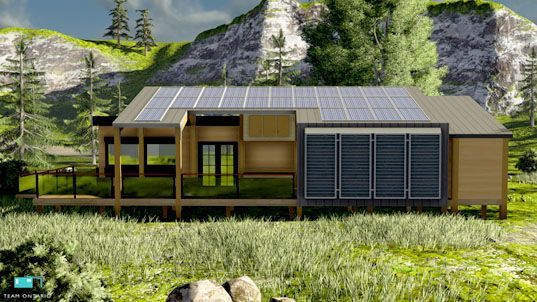As the world becomes more conscious of environmental impact, sustainable home design has emerged as a powerful trend in modern architecture and construction. More than just a buzzword, sustainable home design is a holistic approach that aims to reduce the environmental footprint of a home while enhancing its comfort, efficiency, and long-term value. Whether you’re building a new home or renovating an existing one, embracing sustainable practices can lead to a healthier lifestyle and a more resilient planet.
What is Sustainable Home Design?
Sustainable home design refers to the planning, construction, and operation of homes in a way that minimizes environmental impact. This approach includes energy efficiency, water conservation, sustainable materials, and reduced waste. The goal is to create homes that are both environmentally friendly and economically viable, providing long-term benefits to homeowners and the community.
Key Elements of Sustainable Home Design
- Energy Efficiency One of the core principles of sustainable home design is reducing energy consumption. This can be achieved through high-performance insulation, energy-efficient windows, and the use of smart appliances. Installing solar panels or using other forms of renewable energy can further decrease reliance on fossil fuels and lower utility bills over time.
- Passive Design Techniques Passive solar design uses natural energy sources to heat and cool the home. Proper orientation, window placement, shading, and thermal mass help maintain comfortable temperatures with minimal mechanical intervention. This not only reduces energy usage but also enhances indoor comfort throughout the year.
- Sustainable Building Materials Choosing eco-friendly materials is essential for a sustainable home. Recycled, reclaimed, or rapidly renewable materials like bamboo, cork, and reclaimed wood are excellent choices. Additionally, using non-toxic paints, adhesives, and sealants helps improve indoor air quality.
- Water Conservation Sustainable home design emphasizes efficient water use. Low-flow toilets, faucets, and showerheads can drastically reduce water consumption. Rainwater harvesting systems and drought-tolerant landscaping (xeriscaping) further support water sustainability.
- Waste Reduction Reducing waste during construction and throughout the home’s life is another critical component. Planning for minimal waste, recycling construction materials, and choosing durable, long-lasting products all contribute to a more sustainable living environment.
- Indoor Air Quality Ensuring a healthy indoor environment is a major benefit of sustainable home design. Proper ventilation, natural lighting, and the use of low-emission materials help maintain good air quality, which can have a significant impact on health and well-being.
Benefits of Sustainable Home Design
- Lower Utility Bills: Energy- and water-efficient systems significantly reduce monthly utility costs.
- Increased Home Value: Green homes are increasingly in demand, often selling faster and at a higher price than traditional homes.
- Environmental Protection: Reducing emissions, conserving resources, and minimizing waste all contribute to a healthier planet.
- Healthier Living Spaces: Non-toxic materials and improved air quality lead to better overall health for occupants.
- Long-Term Savings: While initial investments might be higher, sustainable features typically pay for themselves through lower maintenance and utility costs.
Sustainable Home Design Trends
The future of sustainable home design looks bright with innovative technologies and practices. Some emerging trends include:
- Smart Home Integration: Automation systems that control lighting, temperature, and appliances for optimal efficiency.
- Green Roofs and Walls: Living plant installations that improve insulation and reduce heat absorption.
- Net-Zero Homes: Residences that produce as much energy as they consume, often through solar and wind power.
- Modular and Prefabricated Homes: Built with precision and minimal waste, these homes are gaining popularity for their sustainability and affordability.
How to Start Your Sustainable Home Journey
- Conduct an Energy Audit: Identify areas where your home can become more energy efficient.
- Work with Green Professionals: Choose architects, builders, and designers who specialize in sustainable home design.
- Prioritize Upgrades: Focus on the most impactful improvements, such as insulation, HVAC systems, and renewable energy.
- Stay Informed: Continue learning about green building practices, local incentives, and emerging technologies.
Conclusion
Sustainable home design is more than a trend—it’s a commitment to a better, more responsible way of living. By making thoughtful choices during the design and construction process, homeowners can create beautiful, efficient, and eco-friendly spaces that support both their lifestyle and the environment. Whether you’re starting from scratch or upgrading your existing home, every step toward sustainability makes a difference.




